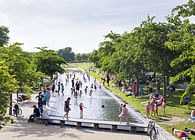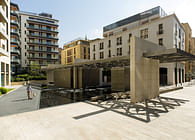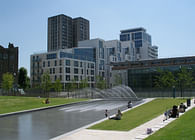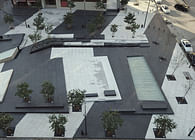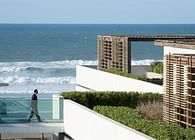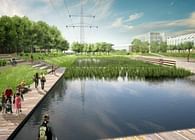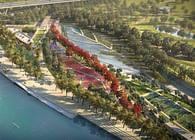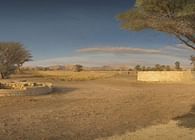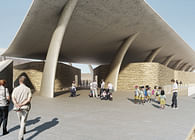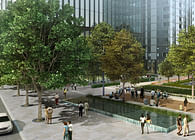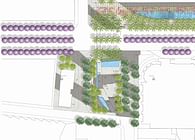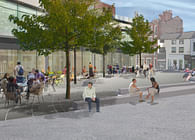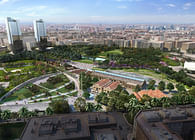
London, GB
Contacted in July 1997 by Foster + Partners, the designers of the ‘Great Glass House’ – a 100m long single span dome – Gustafson Porter + Bowman were asked to provide a landscape which could provide the framework from which the National Botanic Garden could support a collection of endangered plant species from the Mediterranean climatic zones. The client described vertical walls in sun and shade, dry and wet; areas which were laid bare for much of the year but which had specific annual growth at other times; temperature differentials between high cliff faces and protected valleys; plants which grow with little water for much of the year and others which would never dry out; running, flooding and stagnant water and water courses which at times would be wet and at other times dry; regions of olive groves, acacia forest and flowering desert.
These features, of South Africa, South Western Australia, Chile, California, as well as the Mediterranean in Europe became the brief for the garden within the glass house in Wales. The scheme’s immediate gesture is to push down the ground in the centre of the space by 5m at its lowest point. There is a gentle build up of the remaining landscape from the original ground level, giving an overall maximum ravine height of 6m. The key to the project’s success will be to create a coherent landscape within a building. The vertical surfaces are real in that they are formed from cutting into the existing ground rather than building a new hill above it.
As one enters the building from the west entrance, the eye is drawn down into the ravine, and the perception will be a landscape parted from the building. The roof becomes the sky which holds the landscape within it. Planting follows a concept unused in other Botanic Gardens; it is based on form, density and colour and not exclusively plant type or regions of the world. Again the coherence of the landscape is created, on both an experimental and botanical level. Low yellow-greens (3-4m) rise up to more densely planted silver-greens (7-10m) and fall again slightly to dark-greens (7m) as one moves into and above the ravine. The lowest points in the landscape approximately respond to the highest points in the glass house, and similarly the highest density of planting. The visitor still moves from country to country, but always within the atmosphere of an integrated environment.
Status: Built
Location: Llanarthney, GB
Firm Role: Landscape Architect
Additional Credits: Architect: Foster + Partners
Structural Engineer: Anthony Hunt Associates
Mechanical Engineer: Max Fordham and Partners
Horticultural Consultant: Charles Stirton, Ivar Stoke
Project Manager: Schal International Management
